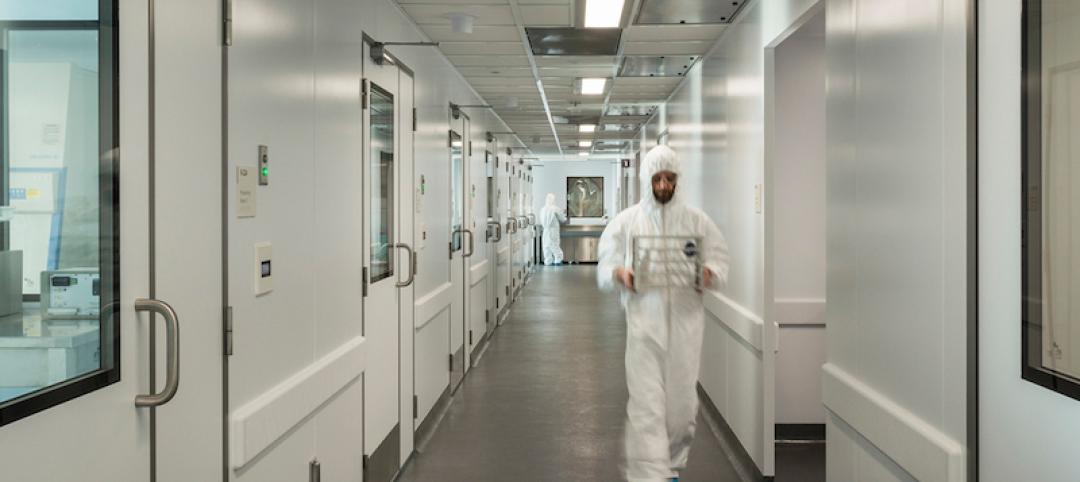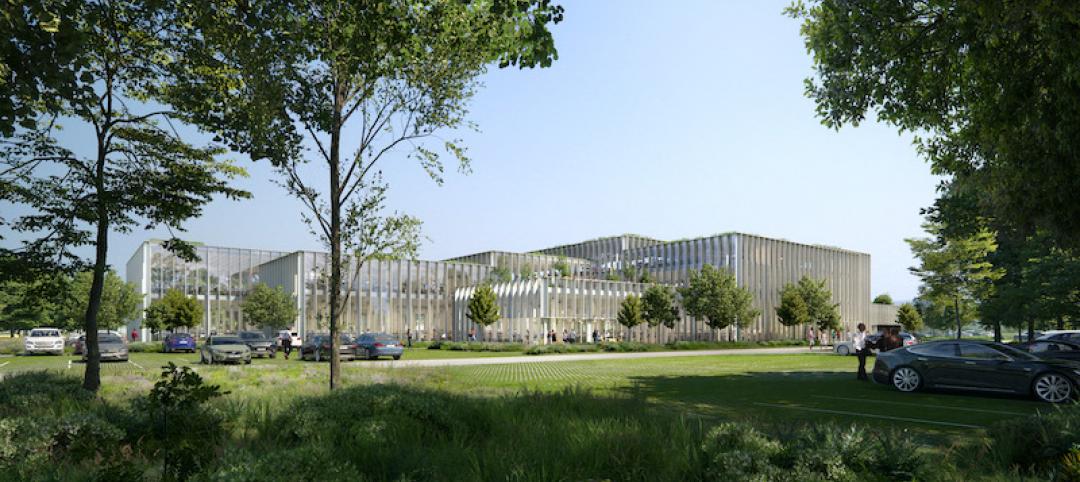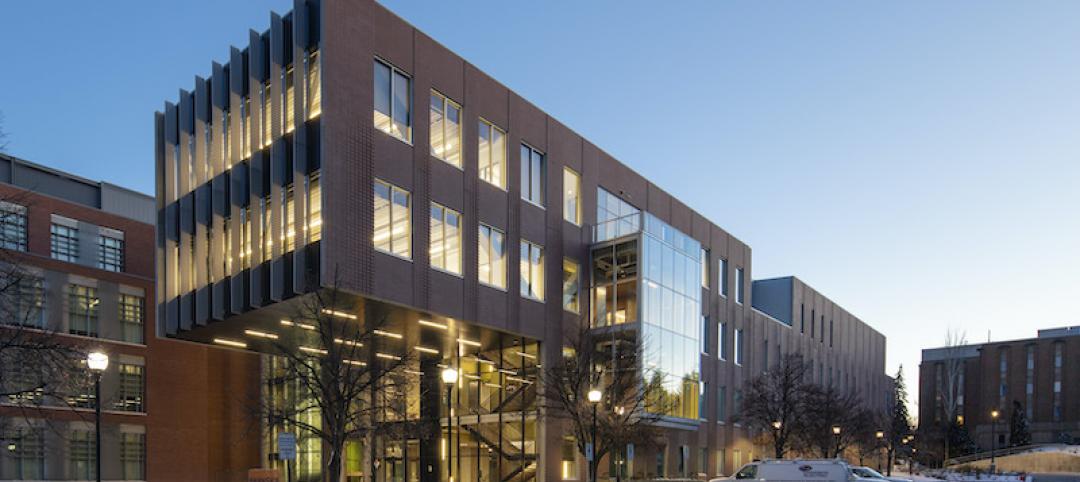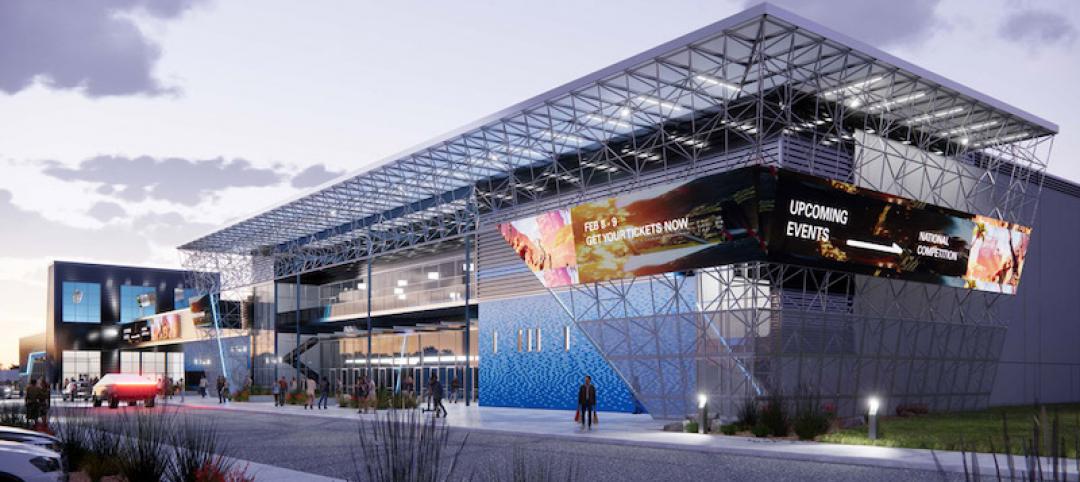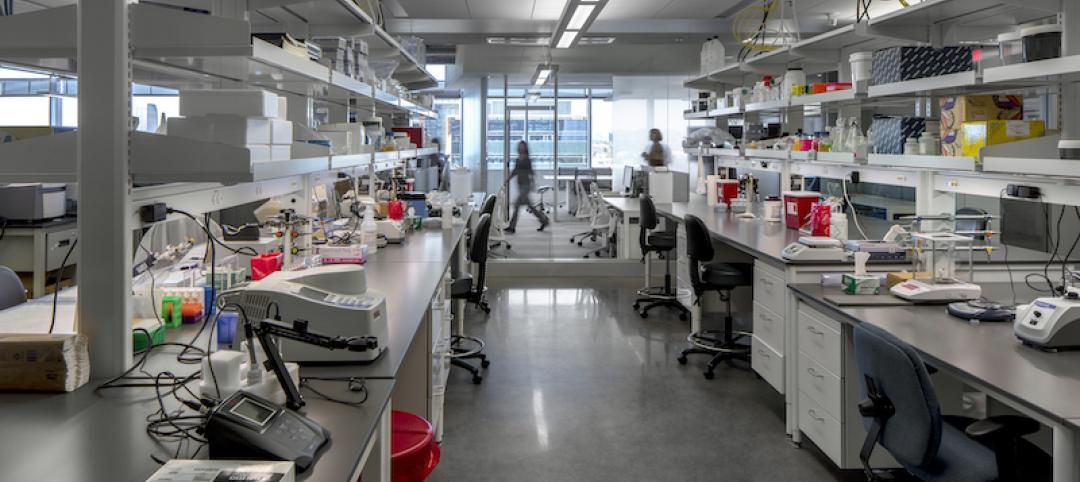The coronavirus pandemic is accelerating momentum nationwide for life sciences real estate demand, according to a recent report from JLL's Healthcare and Life Sciences team.
The report, 2020 Life Sciences Real Estate Outlook, outlines the nation's top life sciences cluster hubs (Boston and San Francisco top the list) and pinpoints emerging markets for life sciences real estate.
Audrey Symes, Research Director, JLL Healthcare and Life Sciences, joined BD+C's David Barista on the August 6 episode of The Weekly to discuss the primary drivers of growth across the nation's life sciences cluster hubs. Watch the highlights here:
Here are highlights from JLL's 2020 Life Sciences Real Estate Outlook (text from JLL):
Rankings of the top U.S. life sciences cluster hubs were released today in the JLL 2020 U.S. Life Sciences Outlook, which also tracks the progress of up-and-coming life science markets that are fast becoming options of choice for life science companies and investors alike. Emerging hubs are looking to real estate to boost productivity as they anticipate growth of the worldwide prescription drug market, expected to surpass $1 trillion by 2022.
Boston, San Francisco, and San Diego retained their rankings as leaders among U.S. life sciences ecosystems and top contenders for venture capital investment, capturing 70% of all venture capital (VC) investment in 2019. Boston and San Francisco also lead the other clusters significantly with respect to development, with 2.7 million square feet (MSF) and 4.0 MSF respectively under construction.
Massive infusion of venture capital is also quick to promote life sciences employment growth. In 2019, 11 of 14 cluster markets set or approached record VC funding levels, a significant positive for the reinforcement of cluster market strength, resilience and security.
New York, Los Angeles, and Philadelphia increased their cluster scores since 2019, reaching new peaks in venture capital funding and life sciences employment. As speed to market accelerates for many pharmaceuticals, proximity to incubators at major research institutions has also supported developing clusters such as Raleigh-Durham, Houston, and Maryland, which have attracted recent interest from developers such as ARE, Longfellow and Hines.
Additionally, the race for development of COVID-19-related vaccines is already beginning to energize demand in pharma-heavy New Jersey, a trend that should spread to more markets as 2020 progresses.
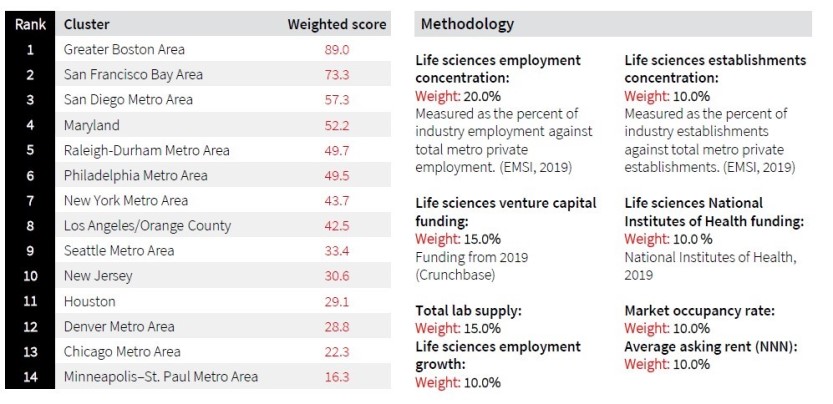
“Each cluster has a different specialty and occupies its own point along the maturity spectrum, providing a diverse range of options for investors and occupiers alike,” said Roger Humphrey, Executive Managing Director, JLL Life Sciences. “But they do a share a major commonality. Each cluster features a highly-educated workforce and ties to the research community, which in turn attracts a steady stream of multi-sourced investment that creates a need for institutional real estate.”
Beyond COVID-19’s recent acceleration of innovation in the life sciences industry, life-enhancing pharmaceuticals and medical devices have been increasingly sought out by Millennials reaching the peak of their earning potential and seeking personalized experiences.
And, the upcoming expiration of a suite of patents creates an opportunity for mid-tier life sciences companies to pursue new long-term profit sources. Many new products on the market and in development are curative rather than therapeutic, increasing marketing potential and overall category growth.
“Conditions are ideal for maximum profitability arising from innovative new pharmaceuticals and medical devices,” said Audrey Symes, Research Director, JLL Healthcare and Life Sciences. “Meaningful advances within the life sciences industry, such as machine learning, are creating new sources of workflow and thus real estate demand. This combination of simulative factors sets up the life sciences industry to expand at an unprecedented pace, both in terms of manufacturing and patient demand.”
Related Stories
Architects | Aug 5, 2021
Lord Aeck Sargent's post-Katerra future, with LAS President Joe Greco
After three years under the ownership of Katerra, which closed its North American operations last May, the architecture firm Lord Aeck Sargent is re-establishing itself as an independent company, with an eye toward strengthening its eight practices and regional presence in the U.S.
Architects | Aug 5, 2021
Lord Aeck Sargent's post-Katerra future, with LAS President Joe Greco
After three years under the ownership of Katerra, which closed its North American operations last May, the architecture firm Lord Aeck Sargent is re-establishing itself as an independent company, with an eye toward strengthening its eight practices and regional presence in the U.S.
Laboratories | May 6, 2021
The big shift: How laboratory design should respond to personalized medicine
Crucial to the success of personalized medicine is the “big shift” away from large-scale pharmaceutical manufacturing to small-scale lab manufacturing.
Laboratories | Mar 10, 2021
8 tips for converting office space to life sciences labs
Creating a successful life sciences facility within the shell of a former office building can be much like that old “square peg round hole” paradigm. Two experts offer important advice.
Giants 400 | Dec 3, 2020
2020 Science & Technology Facilities Giants: Top architecture, engineering, and construction firms in the S+T sector
HDR, Jacobs, and Turner head BD+C's rankings of the nation's largest science and technology (S+T) facilities sector architecture, engineering, and construction firms, as reported in the 2020 Giants 400 Report.
Giants 400 | Dec 3, 2020
2020 Laboratory Facilities Sector Giants: Top architecture, engineering, and construction firms in the U.S. laboratory facilities sector
Affiliated Engineers, HDR, and Skanska top BD+C's rankings of the nation's largest laboratory facilities sector architecture, engineering, and construction firms, as reported in the 2020 Giants 400 Report.
Laboratories | Nov 16, 2020
Washington State University’s new Plant Sciences Building opens
LMN Architects designed the project.
AEC Tech Innovation | Sep 18, 2020
New Innovation Center should heighten Port San Antonio’s tech profile
The facility will include a 2,500-seat arena and serve as new home for the city’s S&T museum.
Laboratories | Jul 24, 2020
Customized labs give universities a recruiting edge
CO Architects is among a handful of firms that caters to this trend.




